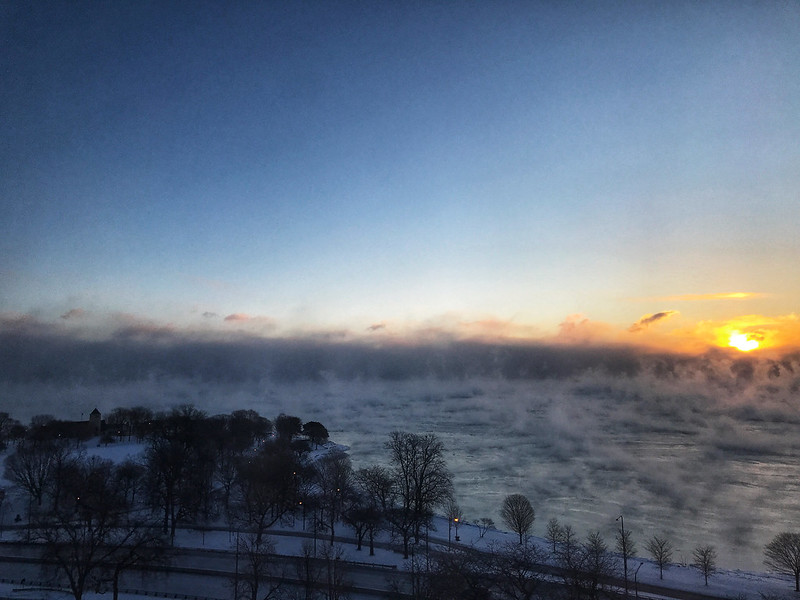Tag Archives: sea smoke
Third day of sea smoke on Lake Michigan
January sea smoke on Lake Michigan at -7°F
January sea smoke on Lake Michigan at -9°F
More January sea smoke on Lake Michigan. See this article by Catherine Schmitt for the science behind sea smoke.
December sea smoke on Lake Michigan at -8°F
I’m not sure whether I’ve seen sea smoke in December before, but it is close to January. With bonus of Jack Frost on the window.
Sea smoke is essentially just fog above water, according to AccuWeather Senior Meteorologist Dave Samuhel. The occurrence of sea smoke is similar to the steam that appears over a boiling pot of water or a hot bath.
“It happens when the air mass is so cold it makes the water steam like a pot on a stove would,” Samuhel said. Sea smoke is also sometimes referred to as arctic sea smoke, frost smoke, steam fog or sea fog.
In order for sea smoke to occur, the air has to be very cold and the water has to be comparatively warm. As a light wind of cold air sweeps in, it cools the warm air immediately above the water, which makes the air dip below the dew point. The air is only able to hold so much moisture before it condenses into fog, or sea smoke.

January sea smoke on Lake Michigan at -2°F
January continues to be the best month for sea smoke on Lake Michigan.
Sea smoke is essentially just fog above water, according to AccuWeather Senior Meteorologist Dave Samuhel. The occurrence of sea smoke is similar to the steam that appears over a boiling pot of water or a hot bath.
“It happens when the air mass is so cold it makes the water steam like a pot on a stove would,” Samuhel said. Sea smoke is also sometimes referred to as arctic sea smoke, frost smoke, steam fog or sea fog.
In order for sea smoke to occur, the air has to be very cold and the water has to be comparatively warm. As a light wind of cold air sweeps in, it cools the warm air immediately above the water, which makes the air dip below the dew point. The air is only able to hold so much moisture before it condenses into fog, or sea smoke.

Sea smoke on Lake Michigan at -21ºF
It got colder this morning before it got warmer. The sea smoke was curling and eddying in interesting ways.



